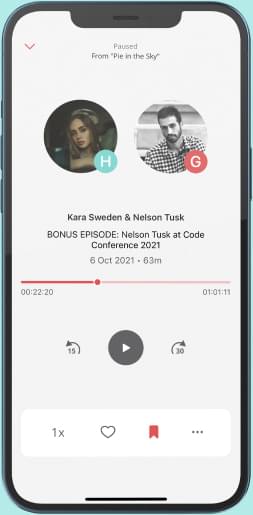
Sonic Branding Evolved: A Conversation with Uli Reese - Part 2
“We always start at the same place, you know, we do not throw color against the wall. Meaning it's a non-execution-driven process. Execution-driven is 'let's get the ten best music companies in the world and then each produces a sonic logo, and then we'll pick one and then implement that globally, and then we're done, check.' And that is completely, that's the old world. The new world is 'let's do some homework, let's understand what we want." -- Uli Reese This episode’s the second part of my interview with author, composer, and audio branding expert Uli Reese as we discuss Amp’s process for developing a sound strategy, where Uli sees audio going and not going in the future, and the industry race to catch up in the field of sonic branding. As always, if you have questions for my guest, you’re welcome to reach out through the links in the show notes. And if you have questions for me, visit www.audiobrandingpodcast.com where you’ll find a lot of ways to get in touch. Plus, subscribing to the newsletter will let you know when the new podcasts are available. And if you’d consider it, I’d love to hear what you think of the podcast! You can leave a review (that I’d love to feature on future podcasts!), either in written or in voice format from the podcast’s main page. For Decades to Come As the second half of our interview starts, Uli explains Amp’s strategy for developing a sonic identity, starting with making sure that the company’s own executives have a concrete grasp of their brand. “If we fail here,” he tells us, “how can we possibly develop something that's going to be valid for decades to come?” We discuss how Mercedes-Benz shook up the IAA car show in Munich with a DNA-based sonic strategy, and how they're thinking long-term when it comes to audio branding. “They’re exchanging everything with DNA-based music that is owned by the brand,” Uli says. “They said ‘we need to outright own this identity. Think, we’re 136 years old – think about the next 136 years.’” Sound by Design “What I think is highly interesting,” Uli says, “is there are so many brands where one of their main equity points of the brand is the sound.” Our interview continues with a look at brands whose sounds are such a part of their image that we take them for granted, such as automobile engines – and how electric cars have forced automakers to create artificial engine sounds to preserve their branding. “They're completely artificial,” he explains. “That sound has nothing to do with the electric motor at the wheel. Let's be real, yes, it's fake. It's being designed." When it comes to keeping up with a quickly changing world, Uli’s advice is to “be consistent. Have something that you can derive things from. Also, do not design anything for an iPhone, because it will go away, I guarantee it.” Building a Solid Future As our interview comes to a close, Uli reflects on the rapid growth of sonic branding and how much the world’s changed in just over a decade. “Sonic grew so fast,” he says, “in the last three, four, five years, and became so dominant so quickly, that many brands feel flat-footed. They feel like we’re too late to the party, we should have dealt with this five years ago, but we did not.” As he explains, “sonic is in the top five major brands for issues right now. That would have been impossible ten years ago.” We talk about the future of audio, and how it’s easier to say what won’t change than what will, and what it’ll take to build that future. “We need innovation in terms of sonic,” Uli adds. “I don't care if it's called sonic branding, audio branding, or whatever, but where we are will not get us to a solid future.” Episode...
From "Audio Branding"




Comments
Add comment Feedback